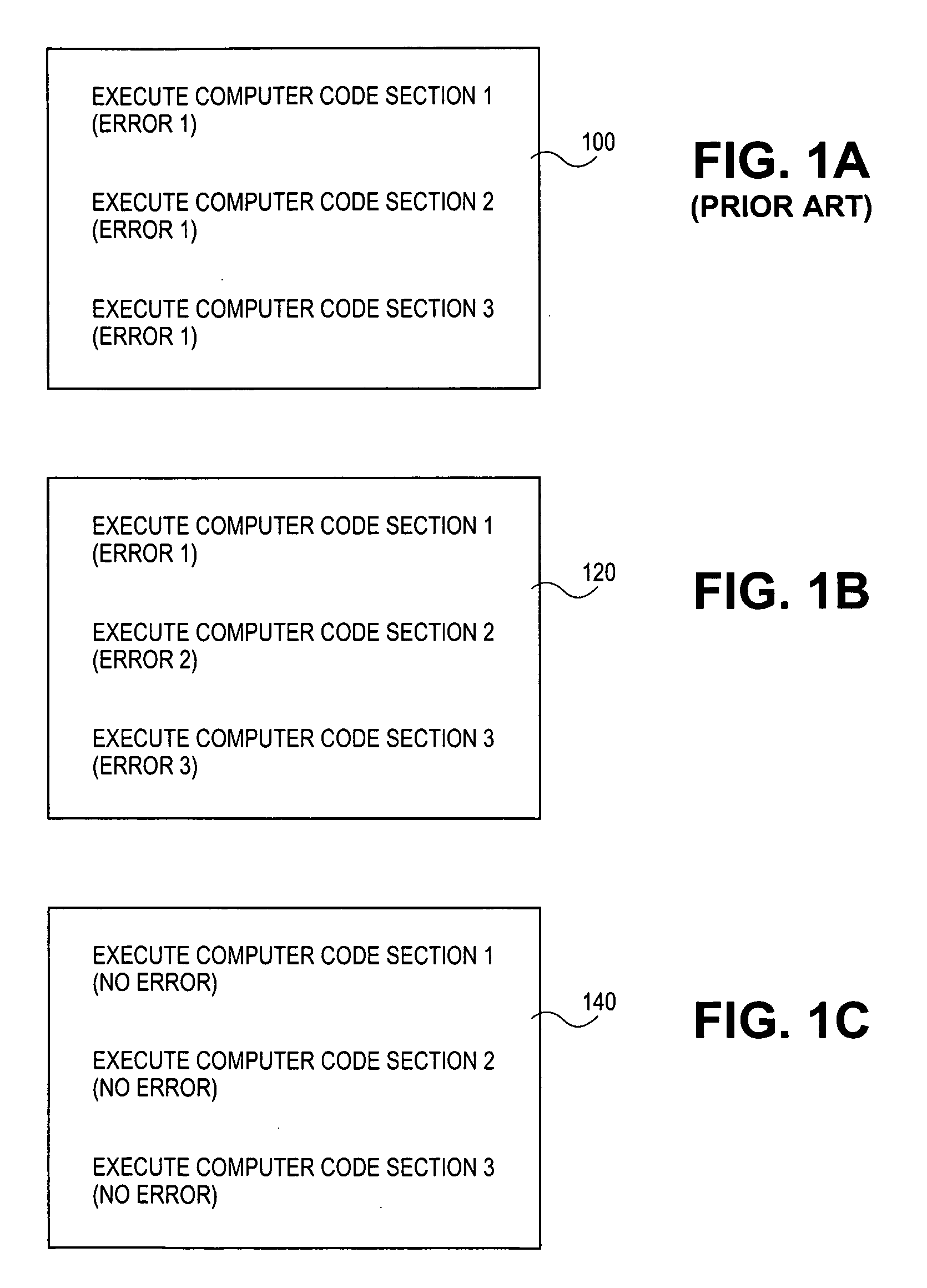Analysis of errors within computer code
a computer code and error analysis technology, applied in the field of computer code analysis, can solve the problems of computer code that is improperly functioning in its handling at least, and achieve the effect of reducing the number of permutations
- Summary
- Abstract
- Description
- Claims
- Application Information
AI Technical Summary
Benefits of technology
Problems solved by technology
Method used
Image
Examples
Embodiment Construction
[0088] It is noted that, although specific embodiments have been illustrated and described herein, it will be appreciated by those of ordinary skill in the art that any arrangement calculated to achieve the same purpose may be substituted for the specific embodiments shown. For example, embodiments of the invention have also been at least substantially described in relation to the errors 215 occurring due to execution of the computer code of the target system 208. However, in other embodiments, the errors 215 may be specifically those that occur due to execution of one, or more than one, component of the computer code of the target system 208, as well as due to the interaction of these components.
[0089] As another example, whereas embodiments of the invention have been described in relation to injecting faults into the data 212, such as configuration data, in other embodiments faults can instead be injected into the data 214, such as customer-supplied business data, in addition to ...
PUM
 Login to View More
Login to View More Abstract
Description
Claims
Application Information
 Login to View More
Login to View More - R&D
- Intellectual Property
- Life Sciences
- Materials
- Tech Scout
- Unparalleled Data Quality
- Higher Quality Content
- 60% Fewer Hallucinations
Browse by: Latest US Patents, China's latest patents, Technical Efficacy Thesaurus, Application Domain, Technology Topic, Popular Technical Reports.
© 2025 PatSnap. All rights reserved.Legal|Privacy policy|Modern Slavery Act Transparency Statement|Sitemap|About US| Contact US: help@patsnap.com



